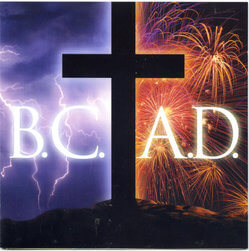What is the full form of ADAD: Anno DominiAD stands for Anno Domini. It is a Medieval Latin term. It means "in the year of our lord". This term is used to represent the year after the Christians God Jesus Christ. Sometimes AD is also spelt as After Death which is wrong. Actually, this is a misconception because AD and BC both are used to represent years count individually, and BC stands for Before Christ. So many people misunderstand this term. 
HistoryAD was discovered by a Monk named Dionysius Exiguus. It had replaced the Diocletian era that had been used in the old Easter table. Dionysius Exiguus created this term to determine the correct date for Easter as directed by Pope St. John I. Before this method, the other methods which were used to find the date for Easter led to confusion, e.g., a 532-year calendar cycle that originated in Alexandra era. PurposeThe main purpose of BC/AD is to create a dating system which can make the birth of Jesus Christ the dividing point of world history. However, it is believed that Jesus was not born in 1 AD, it was around 6-4 BC when he was born. So, according to this dating system, 500 BC means 500 years before Jesus was born. And, 2000 AD means around 2000 years after Jesus was born. UsageThe Julian and Gregorian calendar uses AD and BC as a designation to label the number of years. AD is used to specify the start of the Epoch and BC specifies before the start of the Epoch. In recent times, the term BC and AD are replaced by B.C.E and C.E where B.C.E means "Before Common Era" and CE is used to denote "Common Era". Anno SalutisAn earlier dating system, known as Anno Salutis, which dates years from the birth of Jesus, like Anno Domini, was in use up to the eighteenth century. In the perspective of Christian doctrine, where the birth of Jesus delivered humanity from damnation for all time, it can be interpreted. Common variations include Anno Nostrae Salutis (in the year of our salvation), Anno Salutis Humanae (in the year of men's salvation), and Anno Reparatae Salutis (in the year of accomplished salvation). Listing the yearsThe Anno Domini era's starting year, or epoch, is known as AD 1, while the first year before the epoch, 1 BC, comes right after it. Historians do not use a year zero. Because of this issue with some calculations, a zero is inserted and the letters "AD" and "BC" are removed from astronomical year numbers. For older years, a negative sign "-" is added in accordance with "standard decimal numbering," so starting with year 2, counting backwards would result in 2, 1, 0, -1, -2, and so on. As a result, the two systems are off by one year (for example, - 1 equals 2 BC). However, the concept of a year zero is still absent in civil usage. Expansion of the use of AD & BCAfter being adopted by the Holy Roman Emperor Charlemagne to date all European acts of governance, the B.C./A.D. system gained additional traction in the ninth century. By the 15th century, the B.C./A.D. system was widely established over all of Western Europe. The inclusion of the system was implicit in the adoption of the Gregorian calendar in the sixteenth century, and it later became a global standard with the publication of ISO 8601 by the International Organization for Standardization, which outlines a widely recognised system for representing dates and times.
Next TopicFull Form
|
 For Videos Join Our Youtube Channel: Join Now
For Videos Join Our Youtube Channel: Join Now
Feedback
- Send your Feedback to [email protected]
Help Others, Please Share










